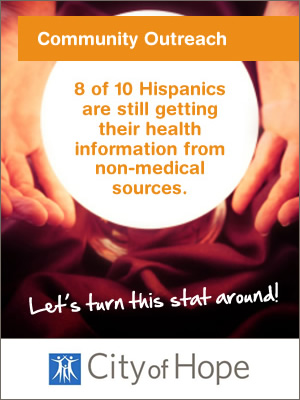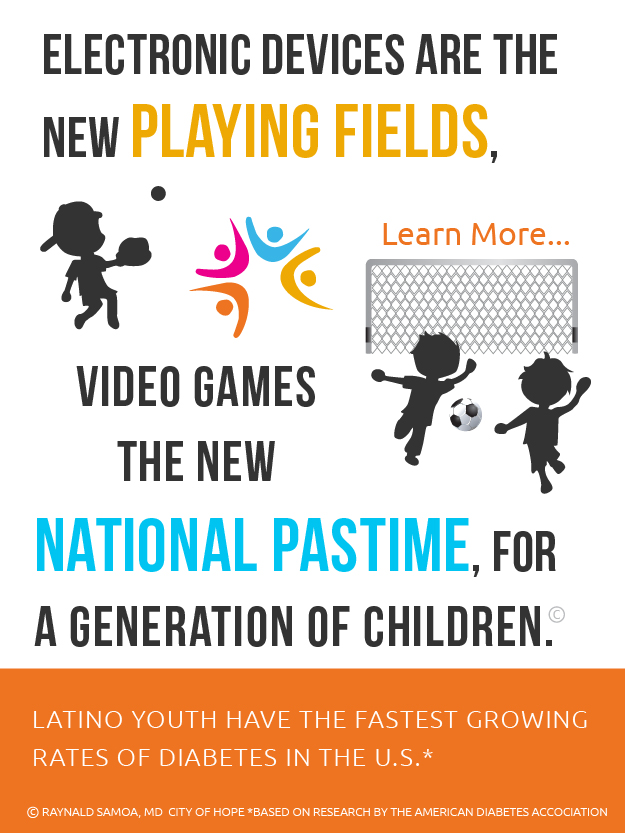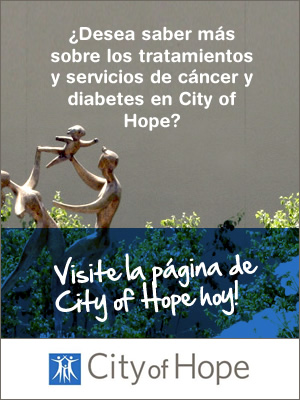
Obesity Prevention in Latino Communities
09/10/2015 12:22PM | 7285 viewsInequities in access to healthcare, the quality of care received and opportunities to make healthy choices where people live, learn, work and play all contribute to the rates of obesity being higher for Latino adults and children compared to Whites. Also contributing to the higher rates of obesity is the fact that Latino communities experience higher rates of hunger and food insecurity, limited access to safe places to be physically active and targeted marketing of less nutritious foods.1,2
Latinos are the fastest growing population in the United States — it is estimated that nearly one in three children will be Latino by 2030 — so addressing these disparities is essential for the well-being of individuals and families and to help contain skyrocketing U.S. healthcare spending and increase the nation's productivity.3
- 42 percent of Latino adults are obese compared with 32.6 percent of Whites.4 More than 77 percent of Latino adults are overweight or obese, compared with 67.2 percent of Whites.
- 22.4 percent of Latino children ages 2 to 19 are obese, compared with 14.3 percent of White children.5 More than 38.9 percent of Latino children are overweight or obese, compared with 28.5 percent of White children.
- Rates of severe obesity (BMI greater than 120 percent of the weight and height percentiles for an age rage) are also higher among Latino children ages 2 to 19 (6.6 percent) compared with White children (3.9 percent).6
- And, the obesity rates for Latino children are much higher starting at a young age — for 2 to 5 year olds, the rates are more than quadruple those of Whites (16.7 percent compared with 3.5 percent).7By ages 6 to 11, 26.1 percent of Latino children are obese compared with 13.1 percent of Whites. Almost three-quarters of differences in the rates between Latino and White children happens by third grade.8
Strategies to address these disparities must include a sustained and comprehensive approach — targeting the challenges that stem from neighborhoods, schools, workplaces and marketing environments that make it difficult to access healthy affordable foods and be physically active.
Lack of access to affordable healthy food
Nearly one in four Latino households are considered food insecure (when having consistent access to adequate food is limited by lack of money or other resources), compared with 11 percent of White households.9 Approximately 23 percent of Latino families are living in poverty,10 and over the past 30 years in the United States, White families have earned $2 for every $1 that Latino families earned.11
A number of studies have shown that when Latino families do not have enough money for everyone to eat full and nutritious meals, there is an increased risk of obesity, particularly among the children in the household.12 Latino children consume higher amounts of sugar-sweetened beverages than other children,13 and one study in Houston, from 2000 to 2004, found that two out of every three foods Latino children consumed included pizza, chips, desserts, burgers or soda/juice.14 In part, this is because there is a link between income and food choice — often the less expensive options that are purchased to help stretch budgets are lower in nutritional quality. Low-income Latino families spend about one-third of their income on food, and much of the food purchased is calorie-dense, low in fiber and high in fat, sodium and carbohydrates.15
Lack of access to healthy foods in neighborhoods is also a problem. Greater accessibility to supermarkets is consistently linked to decreased rates of overweight and obesity.16 Studies have found that there is less access to supermarkets and nutritious, fresh foods in many urban and lower-income neighborhoods and less healthy items are also often more heavily marketed at the point-of-purchase through product placement in these stores.17,18Latino neighborhoods have one-third the number of supermarkets as non-Latino neighborhoods.19 According to the 2013 YRBS, 9.3 percent of Latino youths did not eat vegetables during the prior week, compared to 4.5 percent of White youths.20
In addition to food access issues at home and in their neighborhoods, Latino students also tend to have increased access to unhealthy foods at school.21 A number of studies have found that schools with a higher proportion of Latino students tend to have weaker policies regarding access to competitive foods in schools, and may be less likely to implement nutritional guidelines for competitive foods.22
Barriers due to language, culture and immigration status
Several factors can prevent many Latinos from participating in programs that could provide increased access to healthier choices. Health education and programs — including ones designed to improve nutrition, increase activity and prevent obesity-related health problems — are often not made available in Spanish and not sensitive to cultural differences. In addition, many health education workers have not been trained to work with Latino populations. Often access to needed programs is further impeded when immigration status is related to eligibility for different nutrition and health programs, or when potential beneficiaries fear involvement of immigration officials. There can be limited information and lack of understanding by the potential participants and the workers in the programs themselves, who also may not be trained to understand how to provide services for people of different immigration status or for Spanish speakers. Finally, there exists a history of issues and stigma within systems, which can make it harder for many Latinos to choose to take advantage of available benefits. In 2011, 34.9 percent of all Latinos were eligible for SNAP but only 21.4 percent received benefits.23,24
Higher exposure to marketing of less nutritious foods
Latinos are a major and increasing target for food marketers, particularly due to their increasing proportion of the U.S. population and relative spending power. Studies have found that 84 percent of youth-targeted food advertising on Spanish-language TV promotes food of low nutritional value. Between 2010 and 2013, fast food restaurants increased their overall advertising expenditures on Spanish-language TV by 8 percent. Latino preschoolers viewed almost one fast food ad on Spanish-language TV every day in 2013, a 16 percent increase from 2010. In addition, low-income Latino neighborhoods have up to nine times the density of outdoor advertising for fast food and sugary drinks as high-income White neighborhoods,25 and Latino children are more likely to attend a school that is close to fast-food restaurants and convenience stores.26
Limited access to safe places to be physically active
Physical activity is important for maintaining a healthy energy balance.27 Studies have found trends showing Latinos often have less access to safe places to play or be active.
In 2011, Latino adults were 30 percent less likely to engage in physical activity as Whites.28 According to the 2013 YRBS, 16.2 percent of Latino youth did not participate in at least one hour of daily physical activity during the prior week, compared with 12.7 percent of White youth.29
Only one-third of Latinos live within walking distance of a park — compared with almost half of all Whites. Elementary schools with a majority of Latino students are less likely than those with a majority of White students to have 20 minutes of recess daily or 150 minutes of physical education a week.30 Latino children are less likely to be in after-school activities where they are physically active, due to factors including cost of participation, transportation and language barriers.31 And, more than 80 percent of Latino neighborhoods did not have an available recreational facility, compared to 38 percent of White neighborhoods, according to a 2003 to 2004 study.32











Post your Comment
Please login or sign up to comment
Comments